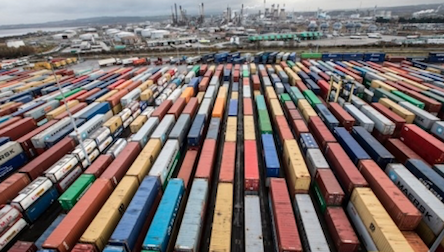The UK is on course to experience five years of lost economic growth, the longest since the aftermath of the Global Financial Crisis, according to the latest quarterly outlook of the UK economy by the National Institute of Economic and Social Research (NIESR).
The UK central bank will not succeed in returning inflation to its 2% target before 2028 at the earliest, according to the NIESR, which warned the UK economy was succumbing to stagnation.
“UK GDP is currently (2023 Q1) 0.5 per cent below the level of GDP before the pandemic,” said the NIESR, a leading academic think-tank.
“Our forecast does not have it passing this level until the third quarter of 2024.
“Despite continuing to expect the United Kingdom to steer clear of a recession in 2023, GDP is projected to grow barely by 0.4 per cent this year and by 0.3 per cent in 2024, with the outlook remaining highly uncertain.
“There are, in fact, even chances that GDP growth will contract by the end of 2023 and a roughly 60 per cent risk of a recession at the end of 2024.
“We forecast inflation to remain continually above target until 2025.
“More specifically we expect it to fall to 5.2 per cent by the end of 2023 and to 3.9 per cent by the end of 2024, as the effects of the rises in Bank Rate over the past year start to take effect.
“Nevertheless, with core inflation at 6.9 per cent, and other underlying inflation measures remaining high, we see significant risks to our inflation forecast, which could result in inflation being higher than anticipated.
“We have conditioned our forecast on one further 25 basis point rise in Bank Rate – peaking at 5.50 per cent – and advise the MPC makes clear in its communication that, as monetary policy is forward looking, it has done enough to get in front of inflation, as it sets out the path it expects inflation to take towards target.
“Failing to do so risks further adverse market reaction.
“Low economic growth and stagnant productivity is increasing the financial vulnerability of households in the bottom half of the income distribution and the incidence of destitution at the poorest end.
“Our projections for the General Election year of 2024 suggest that inequalities of income and assets will grow, with little real income growth for many, low or no savings, higher debt, as well as elevated housing, energy and food costs.
“As a consequence, the shortfall in the real disposable incomes of households in the bottom half of the income distribution is set to reach some 17 per cent in the period 2019-2024.
“Real wages in many UK regions are expecting to be below pre-pandemic levels by the end of 2024. More specifically, the East of England, South-East and West Midlands will be below pre-Covid levels, with real wages in the West Midlands projected to be around 5 per cent lower than in 2019.
“We expect the number of people available for work to continue to grow with theunemployment rate reaching 4.7 per cent in 2024 and peaking at 5.1 per cent, its ‘natural rate’, by 2026.”
Professor Stephen Millard, NIESR Deputy Director for Macroeconomic Modelling and Forecasting, said: “The triple supply shocks of Brexit, Covid and the Russian invasion of Ukraine, together with the monetary tightening that has been necessary to bring inflation down, have badly affected the UK economy.
“As a result, we expect stuttering growth over the next two years and GDP to only recover to its 2019 Q4 level in 2024 Q3.
“The need to address the UK’s poor growth performance remains the key challenge facing policy makers as we approach the next election.”
Professor Adrian Pabst, NIESR Deputy Director for Public Policy, said: “The aggregate shocks to the UK economy have widened disparities of income and wealth across the household distribution and between prosperous and poor parts of the country.
“Falling real wages, combined with persistent inflation, are hitting the low-income households hardest, leading to lower real disposable incomes by about 17 per cent in 2024 compared with 2019.
“The increasing inequalities facing poorer families are reflected in slower wage growth and fast-rising unsecured debt.
“For some of the poorest in society, coping with low or no real wage growth and persistent inflation has involved new debt to pay for permanently higher housing, energy and food cost.”
